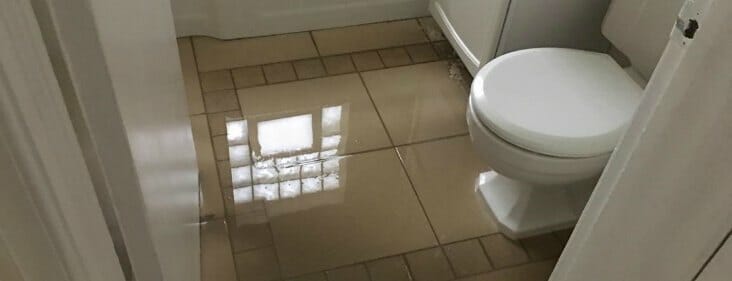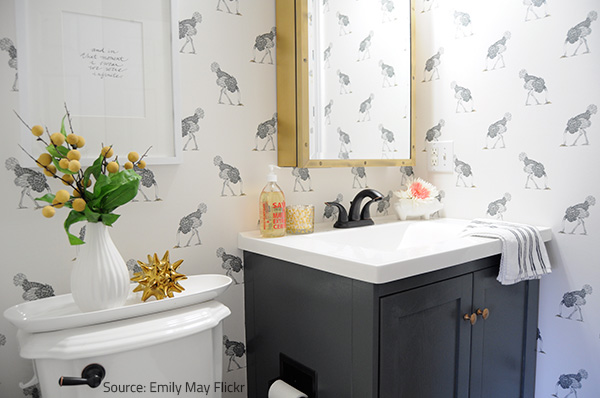They are making several good annotation regarding How to Repair and Prevent Bathroom Water Damage? in general in this content directly below.

Water damage often occurs in the restroom as a result of the water utilized day-to-day. Often, the damage could be a little mold and mildew from the shower. Other times, it's large damage on your flooring. Whatever it is, it is always excellent to understand the reason as well as stop it before it takes place.
This guide will certainly undergo several of the common sources of water damage in the restroom. We will certainly also analyze what you can do to prevent these reasons from damaging your shower room. Let's dive in.
These are the typical reasons you would have water damage in your bathrooms as well as just how you can find them:
Excess Dampness
It's cool to have that long shower and also splash water while you hem and haw and act like you're executing, but often these acts could trigger water damage to your washroom.
Splashing water around can trigger water to head to corners as well as create molds. View just how you spread out excess moisture around, as well as when you do it, clean it up to stop damage.
Fractures in your wall surface floor tiles
Bathroom wall ceramic tiles have actually been specially developed for that function. They shield the wall from wetness from individuals taking showers. Nonetheless, they are not indestructible.
Sometimes, your restroom wall surface floor tiles split and allow some wetness to permeate right into the wall surface. This could potentially ruin the wall surface if you do not take any type of activity. If you see a crack on your wall ceramic tiles, repair it immediately. Don't wait up until it ruins your wall surface.
Overruning toilets and sinks
As people, often we make blunders that can cause some water damage in the bathroom. For instance, leaving your sink tap on might trigger overruning and also damage to other parts of the restroom with wetness.
Likewise, a malfunctioning commode can create overruning. For example, a broken toilet deal with or other parts of the cistern. When this occurs, it might damage the floor.
As quickly as you notice an overflowing sink or bathroom, call a plumbing technician to assist manage it quickly.
Ruptured or Dripping Pipelines
There are many pipes carrying water to different parts of your restroom. Some pipes take water to the bathroom, the sink, the taps, the shower, as well as numerous other places. They crisscross the little location of the washroom.
From time to time, these pipes could get rusty and burst. Other times, human activity can create them to leakage. When this takes place, you'll locate water in the edges of your shower room or on the wall surface.
To find this, watch out for bubbling walls, molds, or mold. Call an expert emergency situation plumbing technician to repair this when it occurs.
Roofing Leakages
Often, the issue of water damage to the restroom may not come from the restroom. For example, a roofing system leak could create damages to the washroom ceiling. You can identify the damages done by checking out the water stains on the ceiling.
If you find water stains on your ceiling, examine the roof covering to see if it's harmed. Then, call a professional to help address the concern.
Final thought
Water damage to your restroom can be bothersome. However, you can manage it if you stop a few of the causes mentioned in this overview. Call an expert emergency plumber if you see any kind of serious damage.
How to Repair a Water-Damaged Wall in the Bathroom
All you need to know to repair bathroom wall water damage – from identifying the water source to finishing the repair professionally. If you don’t act quickly to resolve a water damage problem, you could find that it develops into a mold issue and/or cause structural damage to your home. Follow this guide to repair your bathroom before it's too late.
All you need to know to repair bathroom wall water damage
Water damage is a common household problem, and one that, if left unrepaired, can quickly lead to structural problems and health issues. The two most likely rooms where water damage may occur is the bathroom and the kitchen – where water is used often and there is high humidity.
What is water damage?
It is easy to think of water damage as caused by a flood or leaking tap or burst water pipe. However, when water damage is assessed, there are three main categories into which water falls (as classified by the American National Standards Institute). These categories are defined as:
Category 1 Water – ‘Clear Water’
This is sanitary water. There is usually no major threat to health by washing with this water, drinking it, or inhaling if it is streaming. Most water that enters your home will be category 1 water, while most water leaving your home will be either category 2 or 3 water. It may also come from melting snow, rainwater and water tanks.
Damage caused by this type of water can usually be repaired or restored, though this doesn’t mean that there are no potential health issues.
Category 2 Water – ‘Grey Water’
This is contaminated water – sometimes considerably so – and will cause illness if consumed or if it comes into contact with your skin. Water damage in this category is often caused by overflows from toilet bowls, and damage to washing machines and dishwashers. While damaged items might still be repaired or restored after damage by grey water, it is more difficult and more expensive to do so.
If the water damage in your home has been caused by grey water, it is advisable to have repairs made by professionals.
Over time, grey water will deteriorate and become black water.
Category 3 Water – ‘Black Water’
Category 3 water, also known as black water, is highly contaminated and a great risk to health. This may contain raw sewage, heavy metals, and other toxic substances. It will smell terrible.
If this is the water that has caused damage in your bathroom, do not touch it. Stop the water flowing if possible, seal the room and call the experts: it really isn’t worth the risk of ill health and disease that could be fatal. It is very unlikely that items can be repaired or restored if they have been damaged by black water.
https://www.porterscleaning.com/blog/how-to-repair-a-water-damaged-wall-in-the-bathroom/

I'm just very fascinated by How to Repair and Prevent Bathroom Water Damage? and I am hoping you appreciated the new blog post. I beg you set aside a second to promote this entry if you appreciated it. Thank you so much for taking the time to read it.
Book 24/7